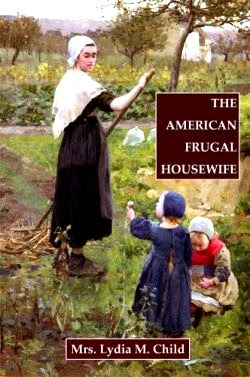I do it because when you weigh flour right into your mixing bowl or food processor bowl, you never have to worry if you sifted it just right or if you tapped the cup. You can just drop in messy-to-measure syrups, oils and fats like shortening. No cups to wash. And large amounts of ingredients, like those for canning, can be measured out quickly as well.
It's less likely you will make a mistake by miscounting the number of cups you added to your bowl.
Even my husband likes using the scale...to weigh out breakfast cereal so we actually eat the right amount, and to weigh out items we're packaging for the freezer right into the wrap or bag. I keep them front and center in a kitchen drawer so we can find them easily as we use them almost every day.
I write any recipes I use regularly to incorporate weighing the ingredients. I like eliminating time with measuring cups, and washing extra dishes, for that matter…I weigh right into the bowl, mixer bowl or food processor bowl.
Digital scales can be purchased at most kitchenware shops, on the internet, and even at discount stores like Walmart. They are very accurate and easy to use. Most will also weigh in grams.
I have had my Cuisinart scale since 1980 and it's still going strong, but is no longer made.
Recently I purchased a very nice Soehnle that weighs up to 30 pounds, has an easy-to-read dial, and won’t shut off until you shut it off, one of my pet peeves about many scales – they turn off halfway through your recipe. I wanted one I could use to weigh canisters of flour and sugar, and quantities of food for canning and freezing. We use it for small amounts in the kitchen too. This is the one – if only it didn’t show every fingerprint!
Myrna is still using her WayRite scale she got when she married! And it still works perfectly.
You can convert your own recipes to weights by simply measuring and then weighing your favorite recipes (minus the cup), and jotting the weights down on the recipe or use the chart below.
Dairy
Butter............................ 8 oz
Buttermilk...................... 8 ½ oz
buttermilk, dry................ 4 oz
Cheeses
American, shredded ........4 oz
Blue, crumbled ...............5 oz
Cheddar, shredded ..........4 oz
Cream, regular ................8 oz
Cream, whipped ..............5 ½ oz
Parmesan, grated ............3 ½ oz
Parmesan, shredded ........3 oz
Ricotta ..........................8 ½
Cottage cheese
large curd...................... 8 oz
small curd .....................7 ½ oz
dry curd ........................5 ½ oz
Cream, lt, med and hvy......8 ½ oz
Eggs
whites, 7 large ...............8 ½ oz
yolks, 14 large ................8 ½ oz
jumbo, each................... 2 ½ oz
extra large, each..............2 ¼ oz
large, each..................... 2 oz
medium, each .................1 ¾ oz
small, each..................... 1 ½ oz
Milk
Evaporated .....................9 oz
Dry non-fat .....................2 oz
Sour cream..................... 8 ½ oz
yogurt ............................8 ½ oz
Flour: If the recipe is older than 1960, I use 4 oz.
Flour (stir,scoop,sweep method)
All purpose..................... 5 oz
All purpose, sifted ...........4 oz
All purpose, (stir, spoon lightly and level method)...4 1/2 oz (most more current recipes)
Bread ............................5 oz
Bread, sifted ..................4 oz
Cake .............................4 oz
Rye, light .......................3 ½ oz
Rye, med .......................3 oz
Rye, dark .......................4 ½ oz
Self-rising ......................4 ½ oz
Whole wheat ..................4 oz
Cereals, crumbs, grains
Barley ..............................8 oz
Bran, unprocessed .............3 oz
Bran flakes .......................1 oz
Bread crumbs, fresh ...........1 ½ oz
Bulgur, raw .......................6 oz
Cornmeal ..........................4 ½ oz
Graham cracker crumbs
(12) 2 1/2" sq................ 3 oz
Oatmeal, dry oats ..............3 oz
Rice, raw
brown ...............................6 ½ oz
long grain ..........................6 ½ oz
converted ..........................6 ½ oz
short grain ........................7 oz
wild ..................................5 ½ oz
Other Baking Ingredients
Chocolate Chips .................6 ½ oz
Cocoa ...............................3 oz
Coconut, shredded, packed ..4 ½ oz
Honey ..............................12 oz
Maple syrup ......................11 oz
Molasses, light .................11 ½ oz
Sugar
Brown, packed ............ ....8 oz
brown, not packed ....... ....4 oz
powdered ................... ....4 oz
granulated ................. .....7 oz
Nuts
hazelnuts, chopped........ .. 4 oz
peanuts ...........................5 ½ oz
pecans, chopped ...............4 oz
pecan halves ....................4 oz
walnuts, chopped ..............4 ½ oz
walnut halves ...................3 ½ oz
Vanilla wafers crumbs
(24) 1 3/4" dia ....................3 ½ oz
Fats
Oils, salad or cooking,...........7 ½ oz
Peanut butter ......................10 oz
Lard ...................................7 oz
Shortening ..........................7


















I do love my kitchen scale. I swear I use it every day, for one thing or another. Once you have one, you will wonder how you functioned without!
ReplyDeleteAnother very informative post! I learn so much from these equipment articles/reviews, I've been using a digital scale for many years, but not to the extent I could. I really appreciate the conversion chart, especislly the flour information. Do you know why the weight varies with recipes prior to 1960?
ReplyDeleteMost of those recipes assumed the cook sifted the flour first, then flour companies started selling "presifted flour", that was supposed to be aerated and didn't need sifting. Those companies developed recipes that used either the "stir and spoon lightly into the cup" measuring method, or even easier, the "scoop and sweep" method. Each method results in a different amount of flour. It pays to check each cookbook or recipe to see what method they use to get the best baking results.
ReplyDeleteAhhh... that makes sense. And yes, I can understand now the importance of checking the method w each recipe. Thanks for the added info!
ReplyDeleteHappy baking!
DeleteThank you very much for the list! I am sure I will use it often!
ReplyDeleteThank you so much for compiling this list. As someone who lives in the UK it will make it easier to convert US recipes.
ReplyDelete